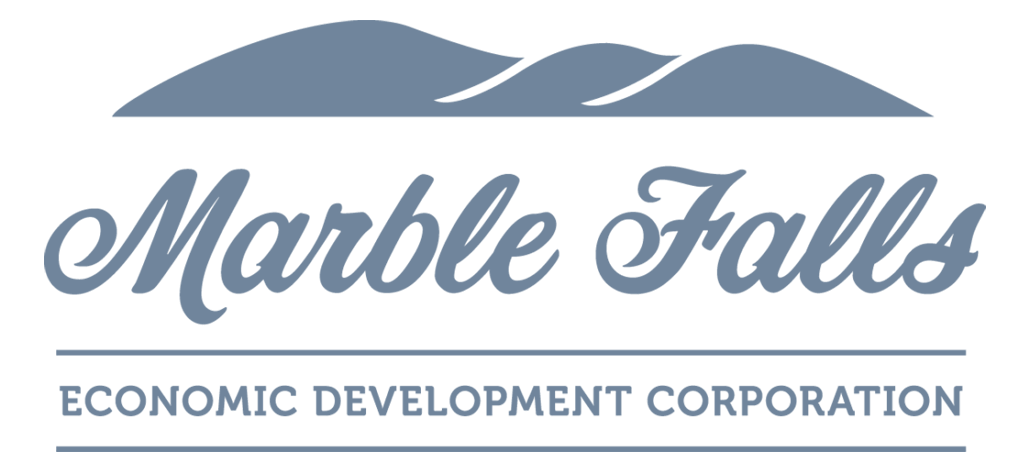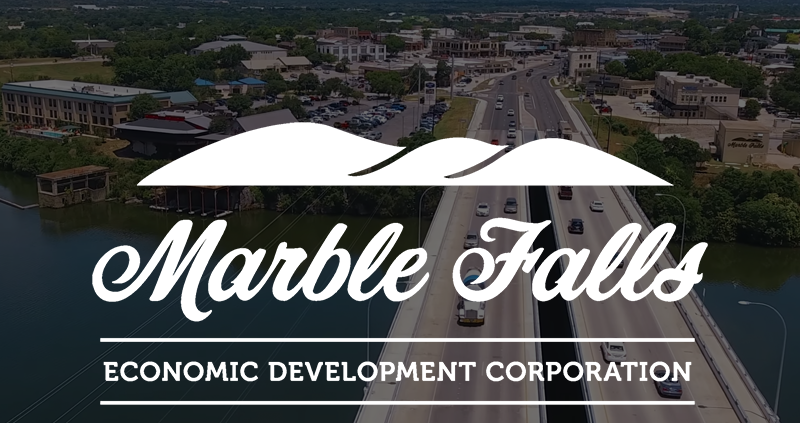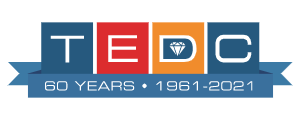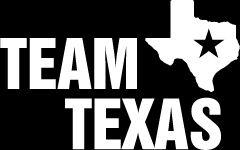MFEDC Highlights
Historically, I’ve used this blog to share information about overall economic activity and significant projects in Marble Falls. We’ve had more than our share of good news and project activity to report, especially for a community our size. Because it’s National Economic Development Week this week, however, I thought I would try to do something a little different. In this post, I thought I would step back for a moment, offer up a little bit of history, and provide some detail on a handful of EDC projects you might not know about.
The Corporation for Industrial Development of the City of Marble Falls (IDC) began in the early 1990s when the half-cent sales tax for economic development was approved by the voters in Marble Falls. In 1992-1993, the amount of revenue collected was $401,375.50. In the first couple of years, about two-thirds of this fund went toward paying the debt service on a new wastewater plant in town. That percentage dropped in subsequent years as sales tax grew with the influx of new development, even though the debt service on the plant increased from about $285k to more than $400k per year. The largest payment to the City for wastewater infrastructure was in 2009-2010, when EDC help was needed with extending the utilities to the hospital. That payment was just short of $1.5 million, and it was followed by another $1.1 million in transfers over the next 5 years. In total, the economic development sales tax has contributed over $9.1 million dollars toward the City’s wastewater fund. To put that into perspective, from 1992 until 2009, the EDC saved water customers in the city between 23% and 46% off of their monthly bills.
After getting the wastewater plant started, the next major project for the IDC was the development of the Business & Technology Park on the north side of town in the late 1990s and early 2000s. About 100 acres have been developed thus far, with another 100 reserved for education and about 100 acres remaining for new development. Today, the Park has grown to accommodate ten businesses with nearly 200 employees and more than $11.7 million in ad valorem value for the City. While all current and upcoming businesses in the Park are important, I think it would be a travesty if Marble Falls didn’t have Save the World Brewing Company in town.
While the Park was initially being developed, the IDC tackled another lofty project by bringing higher education to Marble Falls. In 2002, Texas Tech University began teaching master’s level courses at Marble Falls High School. Realizing that this could not be a long-term solution, the IDC joined forces with the Hill Country Higher Education Foundation and paid for new equipment and lease space in Gateway Park. Then, after TTU outgrew that space, the IDC bought a former church property just up the street on Steve Hawkins Parkway and remodeled it to include office space and classrooms for both TTU and Central Texas College in 2005. The building was named the Frank Fickett Higher Education Center in honor of Mr. Fickett, who provided a considerable donation toward the purchase of the property. A few years later, the IDC paid for the addition and build-out of the second floor of the Fickett Center to accommodate the growing enrollment between the two schools. To date, hundreds of students have completed degree programs at the site in Marble Falls.
2007 was a pivotal year for the corporation. In May of that year, Marble Falls voters approved the dissolution of the 4a corporation and the creation of the 4b corporation, which provided more flexibility on projects such as quality-of-life initiatives. In September, the original IDC merged with the new Marble Falls Economic Development Corporation. While the board remained the same through this transition, the strategic plan expanded.
The next major project was the EDC’s purchase of the property at 1707 Colt Circle in late 2009 to explore the creation of a vocational school in town. Without operational partners on board, however, the EDC ended up negotiating a lease and performance agreement with Ronn Motor Company. The EDC remodeled the building amidst much hype surrounding the company, but Ronn Motors never took off—so the EDC encouraged their departure in late 2011. In early 2012, the EDC entered into a lease/purchase agreement with CorWorth Building Systems for the property. This incubational deal resulted in the EDC winning a Community Economic Development Award from the Texas Economic Development Council that year. In 2014, CorWorth exercised their purchase option with the EDC providing owner financing. Today, CorWorth employs 40 people.
Just as CorWorth was settling into their new space in 2012, the EDC got involved with negotiations to bring Scott & White into the community. The hospital’s fundraising team set a goal of $25 million in local support to bring the finest equipment and technology to their planned campus at US Hwy 281 and SH 71, so the EDC responded to the campaign by entering into a $2.5 million performance agreement over 5 years to reimburse Scott & White for job creation. This agreement paved the way for Scott & White to consolidate three building phases into two and open their specialty clinic in 2013 and the hospital in 2015. Today, Baylor Scott & White employs 445 people with an average wage of $58,000 per year, not including physicians.
The EDC’s current major project—the Downtown Hotel and Conference Center—began in earnest in late 2013 when the EDC started to assemble real estate to support the Downtown Master Plan and the newly-formed Tax Increment Reinvestment Zone (TIRZ). After a few rounds of selective RFQs, we started a public/private partnership with Novak Cobalt Partners to develop, construct, and operate a destination boutique hotel with conference space on a portion of the land that the EDC purchased in 2014. Among the many unique aspects of the partnership, what stands out to me is the EDC’s commitment to reinvest the revenue derived from the project into improving the adjacent park space for locals and tourists alike to enjoy. The buildout of the parks in accordance with the Parks Master Plan that was adopted by the City in 2017 will be a major project for the EDC for several years to come.
While each of the above projects were and continue to be important multi-million-dollar endeavors, the half-cent for economic development has grown to accommodate other programs as well. In 2012-2013, the EDC created a Sign Replacement Program in response to the new sign ordinance adopted by the City. Thus far, the EDC has assisted 17 businesses with more than $19,000 in funding toward replacing their signage. We used this template to create another program in 2013-2014 called the Business Improvement Grant (BIG) Program, which provides a reimbursement to business owners who make physical improvements to their properties. Flat Creek Enoteca, Elwartowski Chiropractic, Mustang Lube, Numinous Coffee, Bridget’s Bed and Breakfast, and 18 others have been recipients of this grant, with the EDC providing more than $170,000 in total reimbursements to support aesthetic and functional improvements at businesses throughout the community. The third major program we created from this template is the Community Leverage Program, which is designed to provide matching funds for important community projects. From 2012 until today, the EDC has provided nearly $380,000 toward park improvements, the arts, and other non-profit groups.
Outside of these established programs, the EDC has funded more than $1.1 million in City projects since 2010. This is over and above the transfers to the wastewater fund I mentioned earlier and includes projects ranging from property acquisition to building renovations to infrastructure improvements to planning assistance. This contribution is the equivalent of more than two cents per hundred on the City’s tax rate, or a savings of about $50 each year for the average homeowner. For our current fiscal year, the EDC has budgeted an additional $281,000 toward City engineering, debt service, and planning support—another 3.87 cents off the property tax rate ($83 in savings for the average homeowner) this year for the citizens of Marble Falls. The final category I’ll mention is a critical area for Marble Falls and most other growing communities—workforce development. To date, we have contributed more than $90,000 toward programs designed to train, certify, and provide wraparound services to students in the medical, plumbing, and electrical fields. We’ll keep an eye open for opportunities in additional fields and continue to work with our partners at the Workforce Network, the Marble Falls ISD, CTC, and others.
In closing, the Marble Falls EDC has a nearly 30-year history of striving to help Marble Falls be the best community it can be. The organization has attempted to be proactive, responsive, and thoughtful in the way we invest the sales tax dollars that come into our community. We want to engage in projects that will have a lasting impact on the future of our community. Based on recent developments and things that are now in the works, I have high hopes for our future. If you ever have thoughts, ideas, questions, or concerns about our role in this future, my office is always open.









Excellent Piece !
Thanks, Young Lady !
I love your highly informative blog.
Hi there! Such a good article, thanks!